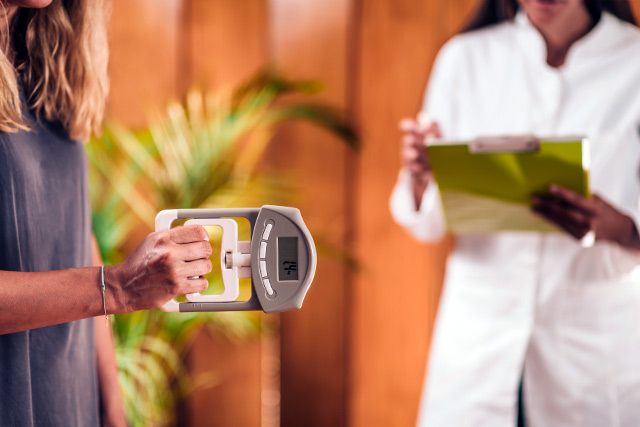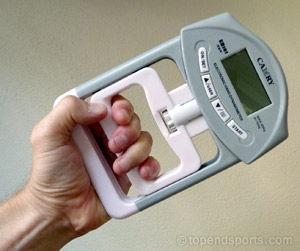Great care is taken so that the proper handgrip strength test measurement procedures are used to minimize measurement error, however often the accuracy of the measurement tool is forgotten about. The accurate workings of the dynamometer can be affected by age and overuse, dropping the dynamometer or by leaks in the hydraulic system.
Handgrip dynamometers may need to be calibrated regularly to ensure reliable and accurate results. For some dynamometers there can be an easy method of calibrating, others may need to be sent back to the manufacturer, or (commonly these days) some equipment may not be able to be calibrated at all.
Reliability and Accuracy of Handgrip Measurement
Reliability is the measure of how well you can get the same measurement when the test is repeated. The equipment is considered reliable if the results are consistent and reproducible over time. You should be able to obtain the same or similar result on two separate trials. Just because a measure may be reliable, it may not be accurate. Not only should it measure the same each time, but it should also accurately measure the true strength.
With your own handgrip dynamometer, you could repeat the same handgrip test and compare each test. This is a simple way to test reliability, however you may have fatigued between tests or your technique differed. It would be better to have a standard testing procedure using a known weight. Using a known weight or force you can test both the accuracy and reliability.
Calibrating
equipment required: standard weights (e.g. 5, 10, 20 kg or pounds), velco straps
The calibration of many handgrip instruments can be performed by loading it at the center with a series of weights.
Hang the weight evenly across the dynamometer handle using velcro straps. Use the dynamometer to lift the weights slowly off the floor while they are strapped to the handle and record the value of the dial. The lifting motion should be very slow and smooth, and the weight should remain evenly distributed between the two sides of the handle.
For each weight, repeat the procedure three times and record each result. The dynamometer should be accurate within 2-3% for the average of the three calibration trials.
After the device's calibration has been checked, you may be able to make the appropriate adjustment on the gauge, otherwise it may be necessary to send the dynamometer to the manufacturer for repair and recalibration.
 hand grip measurement
hand grip measurementRecalibrating the Device
A handgrip dynamometer that is found to be not well calibrated may need to be recalibrated. Some devices have some way built in so that the calibration can be adjusted, otherwise you may be able to send it back to the manufacturer for recalibration.
If recalibration of the device is not possible, you can use the calibration results to make a manual adjustment to the recorded measurements. For example, if the calibration found that the device always measured 10% less, then you can add 10% to the measured value each time you take a measurement.
References
- Ewing-Fess, E., The need for reliability and validity in hand assessment instruments. J Hand Surg. 1986;11A:621–623.
- Ewing-Fess, E., "A Method for Checking Jamar Dynamometer Calibration," Journal of Hand Therapy 1.1:28-32, 1987.
Related Pages
- Calibrating other fitness testing equipment
- See our list of handgrip dynamometers on Amazon.
- About other grip dynamometers.
- grip strength norm tables
- Video examples of the Handgrip Strength Test
- There are some grip strength test results of athletes.


 only $39 USD (with free shipping)
only $39 USD (with free shipping)  Current Events
Current Events